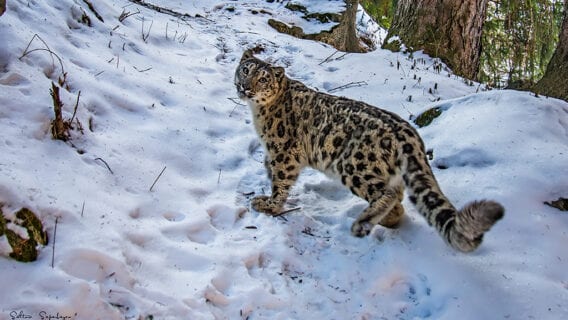
Population dynamics of two Endangered dragonfly species endemic to Colombia
Project overview
This project addresses the vulnerability of tropical high mountain ecosystems, which are considered among the most threatened by climate change. In the páramos of the northern Cordillera Central in Colombia, the species Mesamphiagrion gaudiimontanum and Rhionaeschna caligo are both Endangered. The project aims to monitor the population of M. gaudiimontanum using mark-and-recapture techniques to determine its current population status.
Threats

Climate change

Habitat loss & degradation
For R. caligo, the project seeks to establish population dynamics by determining parameters such as population size, survival rate, detectability, turnover, and mortality, thereby creating a baseline for long-term monitoring.Additionally, the project plans to describe the larval stages of both species and gather natural history data to develop conservation plans. Finally, educational workshops will be conducted with local guides to raise awareness among visitors about the importance of the páramo and the species that inhabit it.
Project objectives
- Monitor the current status of the M. gaudiimontanum population and compare with the baseline developed in 2022.
- Determine the population dynamics for R. caligo, in order to establish a baseline that allows future monitoring of the population.
- Make a comparison of the population dynamics with respect to the dry or rainy season for both species, in order to determine natural fluctuations.
- Conduct educational workshops with guides in the area to raise awareness about the importance of the páramos and the unique characteristics of the species that inhabit them.
- Install two informative billboards on the road to the páramo, allowing passive appropriation of the importance of the páramo and dragonflies in their ecosystem.
Project activities
- Mark individuals of both species during two months of field work in order to establish the dynamics of their populations, one month in the dry season and one month in the rainy season. (This includes the active capture of individuals and marking them for identification, then the analysis of the dynamics and the finding of population parameters is done by mark-recapture models).
- Conduct educational workshops for the guides in the area, which allow the dissemination of the importance of the páramo and the species that inhabit it to the people who visit the area.
- Install informative billboards that allow passive dissemination of knowledge and appropriation of the site.
This project is implemented by Sebastian Arango Quintero, Universidad de Antioquia.




